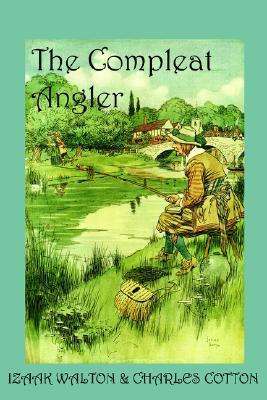Chapter XIII — The Compleat Angler
byChapter XIII – The Compleat Angler begins with Piscator’s thoughtful reflections on the eel, a fish both admired and misunderstood. With genuine curiosity, he recounts the many theories about how eels reproduce, a mystery that has puzzled naturalists for generations. Some have claimed that eels are born from mud, others from dew, while more grounded observers like Rondeletius propose subtle anatomical evidence suggesting they breed in ways not yet fully grasped. This blend of folklore and evolving science adds depth to the chapter, revealing a time when observation, imagination, and inherited wisdom all worked together to explain nature. The Romans’ admiration for the eel is presented with admiration, calling it a centerpiece of elegant banquets, much like Helena was to beauty. Eels, therefore, are not just food but symbols of refinement in both culinary and cultural terms.
As Piscator explores the life of eels, he introduces their seasonal rhythms and instincts. In colder months, they retreat deep into the mud, avoiding the frost in a manner reminiscent of hibernating swallows. Their habits are elusive and secretive, favoring twilight and evening activity, making them an exciting challenge for anglers. Despite their sluggish appearance, eels are tenacious and versatile, eating nearly anything from raw beef to earthworms. The best catches happen under cover of night, using bait that appeals to their sensitive, greedy appetites. Sir Francis Bacon’s note that eels live about ten years contrasts with stories of older lampreys, hinting at the greater mysteries in fish biology. Piscator draws on these tales not just to instruct, but to enchant, building a deep respect for the eel and the stories surrounding it.
From theory, the chapter transitions into practice. Snigling—a traditional method of capturing eels—becomes a focal point of Piscator’s practical advice. With a hooked line and the patience to find crevices under stones and tree roots, the angler can tempt the eel from its hiding place. It is a method that requires calm hands and a thoughtful approach, often more rewarding than forceful strategies. Once caught, the eel is to be handled with care, its strength and slipperiness proving tricky even after it’s out of the water. The instructions are precise, almost ritualistic, elevating the process into a craft. This focus on technique reflects the broader values of angling: patience, observation, and respect for the quarry.
But catching is only half the journey. Piscator offers a richly detailed recipe for preparing the eel, complete with herbs, anchovies, and spices like nutmeg. The emphasis is not merely on taste but on transforming the wild into the refined. Cooking becomes an extension of the angler’s art, celebrating the rewards of time spent in harmony with nature. Still, Piscator tempers his enthusiasm with caution, acknowledging the potential dangers associated with eating eels, especially when not properly prepared. Stories of illness, even death, serve as reminders that nature must be respected, even when it offers abundance. The lesson is clear: indulgence should never overshadow awareness.
Expanding the discussion, Piscator briefly includes other smooth-skinned species like the lamprey, noting their similarities and differences. While they share some behaviors and habitats, they are distinct in their biology and in the angler’s regard. These mentions are not diversions but an expansion of the angler’s knowledge base. Understanding what to fish for—and what to leave—becomes just as vital as the act of fishing itself. Piscator’s appreciation for the diversity of water life ties into his larger philosophy: that angling is a gateway to observing the world more closely, more mindfully.
This chapter, rich in texture and layered with insight, captures the spirit of The Compleat Angler not merely as a manual, but as a reflection on human curiosity and nature’s complexity. Through eels, both admired and mistrusted, Piscator invites the reader into a relationship with the river that is both thoughtful and practical. Fishing becomes more than sport—it becomes a journey into understanding, where lore meets observation and dinner might come with a lesson. The eel, slippery yet noble, serves as a perfect subject for such exploration, challenging anglers not only to catch well but also to think deeply.


